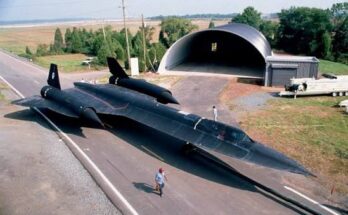
On September 21, 2005, JetBlue Flight 292, an Airbus A320, became the focus of international attention when it experienced a serious mechanical issue shortly after takeoff from Burbank, California. The routine domestic flight was headed to New York’s JFK International Airport but would end up making headlines for a dramatic emergency landing that played out live on television.
The aircraft, carrying 140 passengers and six crew members, encountered trouble shortly after departure when the pilots realized the nose landing gear had malfunctioned. Instead of retracting and locking into position, the gear had rotated 90 degrees and was stuck facing sideways. This type of malfunction, while rare, can create significant risk during landing, especially if not handled with precision.
As soon as the problem was detected, the pilots diverted the aircraft to Los Angeles International Airport (LAX), which had longer runways and emergency support ready. While en route to LAX, the plane circled the skies for more than two hours. This maneuver wasn’t just to buy time—it was a critical effort to burn fuel, reducing the aircraft’s weight for a safer emergency landing.
Inside the cabin, passengers were aware something was wrong, but the full scope of the issue became clear when the aircraft continued to circle. Flight attendants maintained calm, following safety procedures, while the cockpit crew kept passengers informed. Meanwhile, news helicopters picked up on the circling plane and began broadcasting the unfolding drama live, turning the flight into a real-time spectacle for millions of viewers.
On the ground, emergency crews at LAX prepared for the worst. Fire trucks lined the runway, and hospitals were notified. Though the possibility of a crash was low given the pilot’s training and experience, the visual of the twisted landing gear created anxiety among viewers and those onboard alike.

What happened next would be praised across the aviation industry. As the plane made its final approach to LAX, Captain Scott Burke and his crew executed a near-perfect emergency landing. The main landing gear touched down smoothly, and then, with extreme caution, the pilots lowered the damaged nose gear onto the runway. Despite being turned sideways, the nose wheels held together under pressure, creating a shower of sparks as they skidded down the asphalt.
Passengers were unharmed, and applause broke out in the cabin. Emergency responders quickly surrounded the plane, but no fire broke out, and the aircraft remained intact. The professionalism and precision of the flight crew were credited with preventing a potentially catastrophic accident.
Following the incident, JetBlue issued statements commending the crew and offering support to the passengers. Investigations were conducted by the National Transportation Safety Board (NTSB), which later determined that the nose gear problem was due to a known issue with the Airbus A320’s landing gear system. This wasn’t the first time the model had experienced similar issues, and the incident prompted further inspections and software adjustments across fleets worldwide.
The JetBlue 292 event became a case study in pilot training, aircraft design, and emergency response. Aviation experts highlighted the incident as an example of how well-trained crews and good communication can prevent disaster. Captain Burke, in particular, was widely praised for his calm under pressure.
For JetBlue, the event was both a public relations challenge and an opportunity. While no airline welcomes mechanical failures, the successful handling of the incident reinforced the carrier’s safety commitment and led to increased trust among some customers.
In the broader conversation about aviation safety, the flight served as a reminder of the importance of constant vigilance, maintenance, and pilot preparedness. Aircraft are complex machines, and while technology can reduce the likelihood of mechanical failures, the human element remains a vital part of ensuring safe air travel.

Years later, passengers who were on that flight still remember it vividly. Many reported feeling a sense of surreal calm, thanks in large part to the crew’s composed demeanor and honest communication. Others spoke of the emotional moment when the plane came to a stop, and everyone realized they had just escaped what could have been a disaster.
JetBlue Flight 292 remains one of the most memorable aviation incidents of the 2000s—not because of tragedy, but because of the skill and grace with which a potential crisis was averted.


